I always dread Mondays. How is it that in the two short days that you and everyone else is out of the office so many things can go to hell in a handbasket? And so it was that on Monday, July 18, I stumbled into the office and fired up my computer, ostensibly to sift through the 400-plus e-mails that I’d received over the weekend for everything from penal enlargement to how I can make $1 million by letting some African nation transfer money through my savings account (hmm, must be my lucky day!)
However, on this day—instead of a deluge of Viagra offers—I soon found a stream of e-mails from people as far away as Australia asking me what had happened at Road America’s Brian Redman International Challenge the day before. It wasn’t until I had sifted through a few of these inquiries that I found a message from a prominent West Coast restorer pointing me to VRJ photographer Dick Carlson’s Web site (www.pbase.com/atrltd/image). It was there that I saw a series of photographs from what has to be, in my estimation, the worst multi-car pile up I have ever seen or heard about at a historic race meeting. No less than 17 cars were involved in a start-of-the-race accident that sent several people to the hospital (though thankfully, none seriously injured) and which completely destroyed most of the cars involved, including a Cobra and enough Corvettes to start a Chevy dealership.
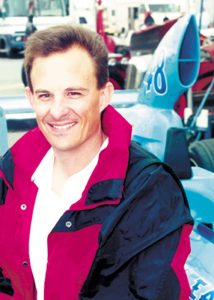
Editor
While the details are still a bit sketchy (even at this late date) it appears that a group of cars at the front of the Group 6 race opened up a small gap on the rest of the field during the pace lap. As the leaders came up the front straight, anticipating the green flag, someone jumped the start, lost control and tagged another car. This set up a small chain reaction that involved several cars at the front. Unfortunately, as anyone who has run Road America can tell you, the front straight goes up over a hill, with the starter stand just to the far side of the crest. So, while cars in the lead group are bouncing off each other like a Bratwurst-fueled pinball machine, the remainder of the field—seeing the leaders tearing off over the horizon—assumed the race was on and so came blasting over the brow at mach speed, only to find several cars strewn all over the track. Just a portion of the metallic carnage can be seen below.
As always happens in these situations, the finger of blame is being waved around like a Ferrari flag at the Italian GP. Some camps point to the pace car, suggesting that it should never have allowed the field to get separated in such a way. Others point to the danger of having the starter’s tower positioned after the brow of the hill and the difficulty that creates in not seeing the flags until you’re at the top of the hill. But let’s face it, how many of us have started races with such huge gaps in the field that it looked like a handicap pursuit race?
Sadly, we as a society have grown accustomed to always pointing the blame at anyone but ourselves. The scalding coffee I spilled on myself was too hot, your honor. The fact of the matter is, if there is blame to be allocated, it really should go to our old friend, the “red mist.” Perhaps it’s me, but did I miss the driver’s meeting where they say that you race to the green flag? For some reason I always thought you didn’t start racing until after the green flag is thrown. Sadly, these larger “spectator” events seem to bring out the worst behavior in some drivers. But the real tragedy here—besides the fact that a dozen lovely machines were turned into M.A.D.D. prevention displays—is the damage that this ultimately does to the image of the sport. Affordable liability insurance is increasingly harder to secure, and having a high-profile event like this look like a scene from “The Dukes of Hazzard,” isn’t going to make our plight any easier.
Ironically, for years American historic racers have noted, with raised eyebrows, what they perceive to be the “aggressive” driving style at European historic races. That fateful Monday morning I had friends in the U.K. remarking, “And you think we drive rough?!” And I’m sorry to say they’re right—we didn’t even have bad weather as an excuse!
Some may take me to task for airing out this seemingly dirty laundry. But, my intention here is not to sensationalize the incident; my intention is to hopefully open a dialogue on the topic so that people consider some of the pitfalls and issues that our beloved sport faces. I’d really like to hear your thoughts on the subject and, perhaps more firsthand accounts from those who were in that race. I don’t want to make this the “crash heard round the world” but from the amount of e-mail traffic I’ve seen on the subject, it just might be.


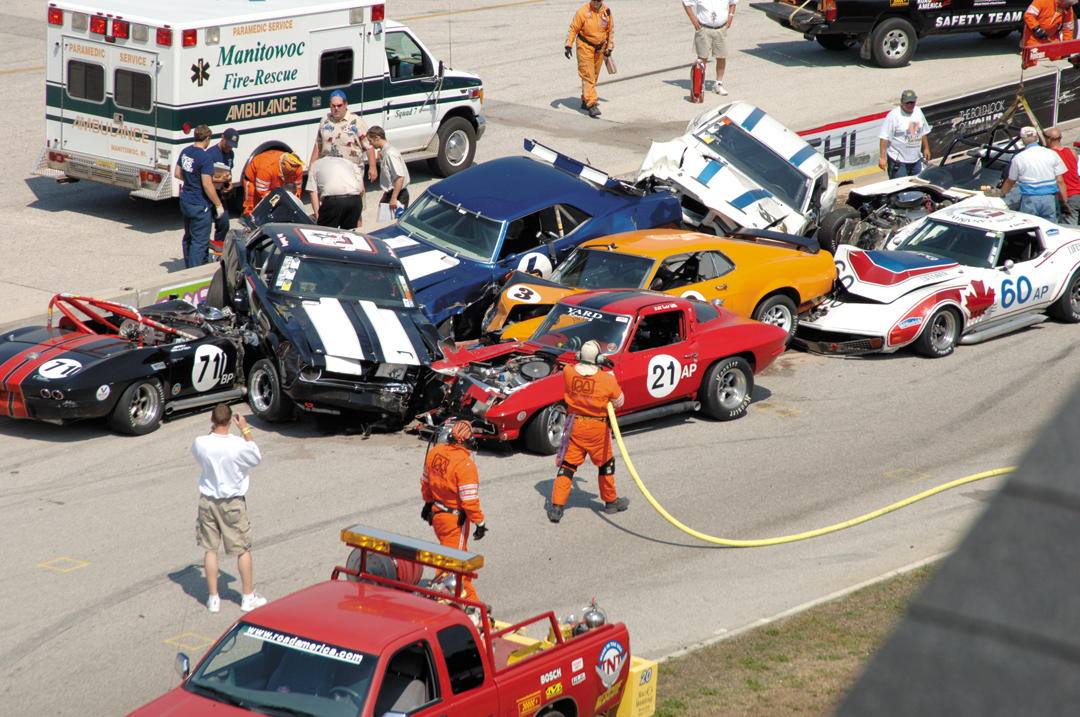

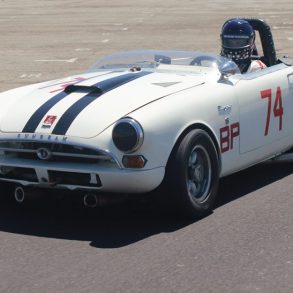
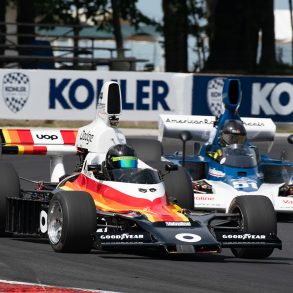
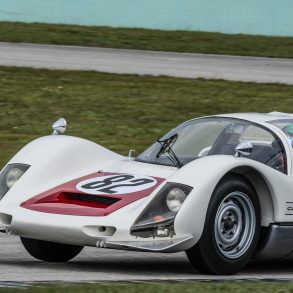
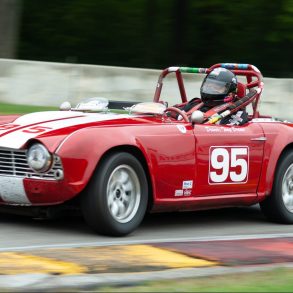



I remember this incident as it was the year I began vintage racing. Wow! What a wake-up call.
The Historic Trans Am group (HTA) is a stand-alone vintage race group that is now increasingly invited to race in support races with the Verizon Indy Car events and the current professional Trans Am series. We earned these invitations due to our strict observance to car authenticity and extremely strict driving standards. The cars are all very similar in capacity, but the drivers are all different, including current and former racecar drivers. Not that we don’t have accidents, but they are far and few in between.
Everybody runs as hard as their abilities allow, but we always reinforce and repeat that “there is nothing to win…no money, no trophy, not even a piece of paper”. We run as a family and as friends and we have a great time doing what we love. The bonus is the fans that truly appreciate the “real, authenticated” Trans Am cars. And of course the cars have real financial value.
Some vintage racers, i.e. Group 6, criticize our mutual cooperation, but we consider ourselves to be lucky to be in this group.
Watch this well-done video and decide who you think “jumped the green flag” and decide what you’d rather do…go home bragging or go home with a worthless hunk of metal.
https://www.youtube.com/watch?v=nzf9pM5S-vU&list=FL_zKF72a-0I8SG198ua0TKA&index=14&t=0s
Just to clarify in my post, none of the cars in the Group 6 accident are real, authenticated Historic Trans Am racecars.